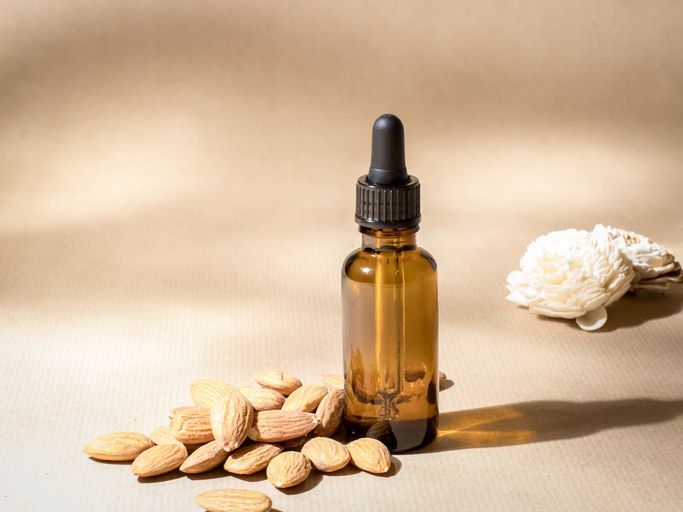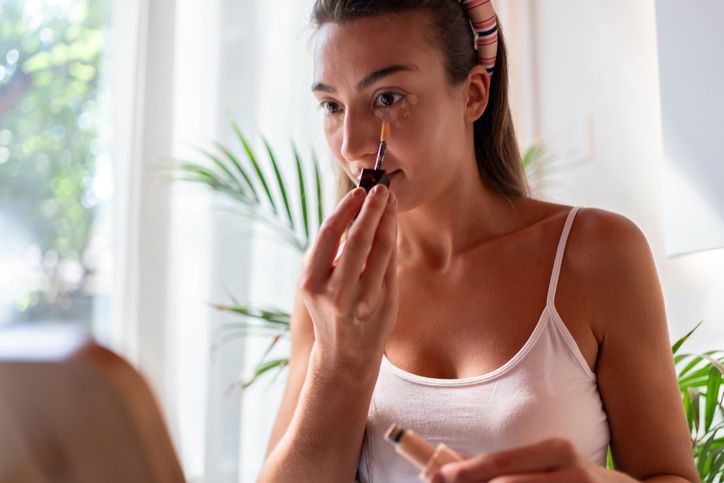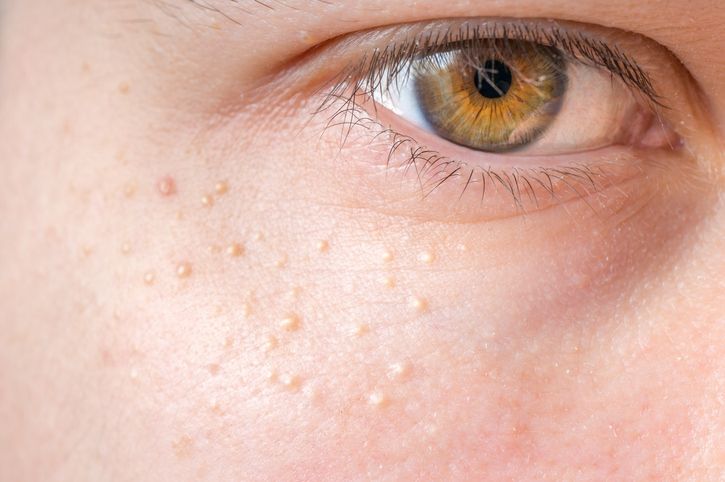- Home
- Trend
- Weight Loss Strategies
- Acne Tips
- Hair Health Information
- Blemish Removal Tips
- Acne Scar Removal Tips
- Muscle Building Techniques
- Intimate Care Tips
- Postpartum Intimate Care
- Eye Bags Wiki
- Tips for Face Slimming
- Secret of Permanent Hair Removal
- Breast Enlargement Tips
- Cure to Snoring
- Marionette Lines
- Skin-Tightening Secrets
Whenever hair loss is mentioned, DHT—short for dihydrotestosterone—often comes up. It’s commonly associated with terms like DHT hair loss, androgenetic alopecia, male pattern baldness, and hormonal hair loss. But what exactly is DHT hair loss? What causes DHT and what’s considered a normal level? And if you want to manage male pattern baldness, is simply lowering DHT levels enough to save shrinking hair follicles? In this article, we’ll explore how daily diet, hair supplements, and anti-hair loss shampoos can help you fight receding hairlines and balding crowns!
What is DHT?
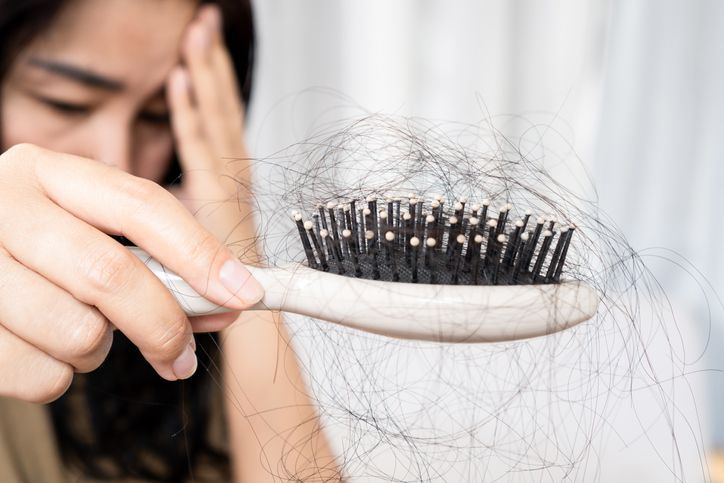
DHT stands for dihydrotestosterone. It is an androgen (male sex hormone) that is derived from testosterone produced by the testes in men and the ovaries in women. This conversion occurs under the action of the enzyme 5-alpha reductase. Now you know why not only men but also women can experience DHT-related hair loss—also known as androgenetic alopecia! Don't assume “androgenic hair loss” doesn’t concern women!
Effects of DHT on Men
DHT plays a key role in male development by promoting the growth of body hair, pubic hair, and the prostate. It also enhances libido and can aid in female conception.
Effects of DHT on Women
Women also produce a small amount of DHT. At low levels, it has little impact on the body but may delay puberty and reduce body and pubic hair. However, when DHT levels are too high, it can lead to menopause symptoms, excessive body hair, acne, and, of course, hair loss.
In Hong Kong, 1 in 4 men experiences balding at the crown or receding hairlines. According to statistics, about 24.68% of Hong Kong men have hair loss issues. That means 1 in every 4 men suffers from crown thinning or an M-shaped receding hairline—and 80% of these cases are due to DHT. Let’s find out why DHT causes hair loss.
Why Does DHT Cause Hair Loss?
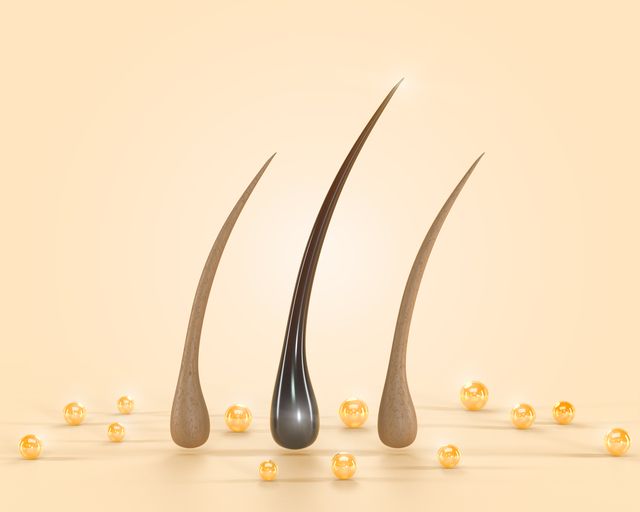
When there’s too much DHT in the body, it binds to androgen receptors in hair follicles, especially on the scalp. This can lead to follicle shrinkage, shortened hair growth cycles, and eventually slower hair growth, finer and shorter strands, and complete growth cessation—resulting in hair loss.
• Normal DHT levels for men: About 30–85 ng/dL (1.0–2.9 nmol/L). Adult men typically have higher DHT levels related to secondary sexual characteristics, libido, and body hair. Excess androgens may lead to DHT hair loss (androgenetic alopecia) and prostate enlargement.
• Normal DHT levels for women: About 3–30 ng/dL (0.1–1.0 nmol/L). Women naturally produce small amounts of DHT, but elevated levels may lead to hirsutism, acne, irregular periods, masculinization, and androgenetic hair loss.
免費體驗
F8 Hair Regrowth Treatment
1 Minute Self-Registration
Date should not be before minimal date
Areas and Symptoms of DHT Hair Loss
DHT-related hair loss most commonly appears at the forehead, crown, and upper rear scalp because these areas have the weakest resistance to DHT. Once attacked, hair follicles shrink or die, leading to slower hair growth, a longer hair growth cycle, thinning hair, and visible hair loss—manifesting as a receding hairline, bald crown, or "monk’s ring" pattern.
Understanding the Impact of DHT: Hair Follicle Miniaturization
In Men: Male pattern baldness typically begins with a receding M-shaped hairline or a balding crown. Hair becomes sparse, revealing more of the scalp.
In Women: Women usually don’t get an M-shaped hairline. Instead, they experience diffuse thinning across the entire scalp. Signs include:
1. Overall finer and thinner hair
2. A wider hair part with thinning at the crown
3. General scalp visibility due to hair loss
This is known as diffuse thinning, caused by hair follicles being overly sensitive to DHT and shortening their growth cycles.
Does More DHT = More Hair Loss? Get a Blood Test!
The causes of DHT hair loss may include genetic predisposition, hormonal imbalances, or chronic stress affecting hair growth cycles.
If you’re experiencing hair loss and want to understand the cause or check your DHT levels, you can get a blood serum test at a clinic, which includes a DHT test.
• Normal male range: 18–579 pg/ml
• Normal female range: 14–15.6 pg/ml
But note: Even if your test results fall within the normal range, you might still be affected by DHT—some people’s hair follicles are particularly sensitive to DHT, so even normal levels can cause moderate to severe hair loss.
免費體驗
F8 Hair Regrowth Treatment
1 Minute Self-Registration
Date should not be before minimal date
The Golden Window for Treating DHT Hair Loss
If you want to rescue your thinning hair and revive your hair follicles for a full head of hair, don’t miss the golden period for treating DHT hair loss! Based on clinical experience from Dr. Lam Man in Hong Kong, hair loss can worsen drastically within 5 years from the onset and may become irreversible.
The optimal treatment window for male pattern baldness is usually between stage 2 and 3—but that doesn’t mean you should wait until stage 2 to act. The earlier you start treatment while follicles are still responsive, the better. Once you’re in the later stages and follicles are too damaged, even anti-hair loss efforts can’t bring back density.
How to Reduce DHT: Healthy Eating Habits
1. 7 Foods That Help Combat DHT Hair Loss
1.1 Tomatoes
Rich in lycopene, a potent antioxidant that may inhibit 5-alpha reductase, reducing DHT production and potentially easing hair loss. Cooked tomatoes with oil improve lycopene absorption.
1.2 Curcumin (Turmeric)
Curcumin has strong anti-inflammatory and antioxidant effects. Studies show it may indirectly lower DHT levels and protect follicles from inflammation. Use turmeric powder in cooking or supplements (look for black pepper for better absorption). Turmeric lattes and turmeric coffee are also popular.
1.3 Green Tea
Packed with EGCG, a powerful antioxidant and anti-inflammatory compound that inhibits 5-alpha reductase. Drink 1–2 cups of strong green tea daily. Avoid drinking on an empty stomach if you have a sensitive digestive system.
1.4 Pumpkin Seeds
Often seen in anti-hair loss supplements, pumpkin seeds contain plant sterols and zinc, which help regulate DHT and support prostate health. Eat about one tablespoon daily, raw or lightly roasted.
1.5 Soybeans & Edamame (Isoflavones)
Soy contains phytoestrogens (isoflavones), which can compete with androgens for receptors, indirectly reducing DHT activity. Try soy milk, tofu, or edamame if your hairline is receding.
1.6 Sesame
Sesame is rich in lignans and vitamin E—both strong antioxidants. Lignans help regulate hormone metabolism and indirectly affect DHT production. Add sesame seeds or paste to meals daily to help prevent DHT hair loss.
1.7 Reishi Mushroom (Lingzhi)
Used in Traditional Chinese Medicine, reishi is a known immune modulator and antioxidant. Studies show it inhibits testosterone’s conversion into DHT, with one 2005 study ranking it #1 among 19 mushrooms for DHT suppression (up to 70%). Consider reishi supplements, but consult a TCM practitioner or nutritionist first.
2. Moderate Caffeine Intake
Can coffee help with hair loss? Yes! Many anti-hair loss shampoos include caffeine. Caffeine stimulates scalp microcirculation, promoting nutrient delivery to follicles. It also has antioxidant and anti-inflammatory effects, and may even block DHT from binding to follicle cells.
3. Manage Stress and Lifestyle
Stress can trigger alopecia areata and DHT hair loss. Chronic stress disrupts hormones and raises androgen levels, worsening hair loss.
4. Avoid Late Nights, Get More Exercise
We know staying up late is bad, but many still do it for a little “me time.” Late nights harm your health, disrupt hormones, and are a top culprit for hair loss in both men and women. Prioritize quality sleep and get at least 30 minutes of moderate exercise daily to boost circulation and metabolism. Better blood flow delivers more nutrients to follicles—so hair loss isn’t a life sentence!
Improve DHT Hair Loss: Hair Growth Supplements
1. Biotin (Vitamin B7 / Vitamin H)
Hair loss caused by DHT, telogen effluvium, alopecia areata, and postpartum hair loss are all closely related to nutritional deficiencies. Biotin, a water-soluble B vitamin, is essential for keratin synthesis—meaning if you want to maintain healthy metabolism for your hair, nails, and skin, you need to ensure your body has enough biotin.
2. Pumpkin Seed Oil
Pumpkin seed oil is a rising star in the world of hair growth supplements. Oral supplements containing pumpkin seed oil are gaining a loyal following. One study found that among a group of men who consumed 400 mg of pumpkin seed oil daily, 44.1% experienced significant hair growth. This is likely because pumpkin seed oil contains an enzyme that inhibits DHT production in the body.
3. Caffeine
As mentioned earlier, studies have shown that caffeine stimulates blood circulation in hair follicles, which can help promote hair growth. A 2007 study indicated that caffeine could serve as a natural hair loss treatment, showing potential for addressing male-pattern and hereditary hair loss. Not a coffee drinker? Don’t worry—caffeine is also available in supplement form.
4. Vitamins B12 and B6
More members of the vitamin family! Told you vitamins are crucial for supporting the hair growth cycle. Vitamins B6, B12, and folic acid are essential nutrients for red blood cell production. A deficiency may lead to anemia, which in turn can deprive your hair follicles of nutrients, resulting in hair loss. Even if your hair loss isn't DHT-related, you could still be dealing with anemia-related or iron-deficiency hair loss.
5. Rosemary Oil
Surprisingly, rosemary oil may rival 2% minoxidil! A bold study conducted in 2015 compared the two and found that rosemary oil had a similar effect in treating DHT-related male pattern baldness. So why not just stick with minoxidil? Because rosemary oil tends to cause fewer side effects like scalp irritation and itchiness. That said, more large-scale research is still needed—but it does provide a natural option when choosing shampoo ingredients.
免費體驗
F8 Hair Regrowth Treatment
1 Minute Self-Registration
Date should not be before minimal date
Reduce DHT and Escape Balding: Hair Growth Shampoos
One in every four men experiences hair loss, so it’s no surprise that hair growth shampoos crowd Hong Kong supermarket shelves. With so many options looking great, how do you pick the right one? In addition to the vitamins and essential oils mentioned above, consider the following:
For Traditional Chinese Medicine (TCM)–Based Hair Growth Shampoos, look for:
• Ginger
• Chinese arborvitae leaf
• Fo-ti (He Shou Wu)
For Western Medicine–Based Hair Growth Shampoos, look for:
• B vitamins
• Biotin
• Caffeine
• Rosemary oil
• Saw palmetto
• Anti-inflammatory ingredients
Keep DHT Levels in Check: Medications and Medical Treatments That Can Protect Hair Follicles from Hormonal Damage!
1. Finasteride
Brand Names: Propecia®, Proscar®
Finasteride is a medication used to treat enlarged prostate and male pattern baldness. It works by inhibiting the type II 5-alpha-reductase enzyme in hair follicles, reducing DHT concentration. This medication is prescribed for men and postmenopausal women only, and may cause side effects like depression, decreased libido, erectile dysfunction, and male breast enlargement. It must be prescribed by a doctor.
2. Minoxidil
Brand Names: REGAINE®, ROGAINE®
Minoxidil is a topical hair growth treatment available over-the-counter at Watsons, Mannings, and other major beauty retailers. Suitable for both men and women, it should be applied twice daily to the entire scalp. It helps dilate scalp blood vessels, delivering nutrients to hair follicles and stimulating growth. The 5% solution is for men, while the 2% version is suitable for women. Side effects may include scalp itching or irritation. Note: Hair shedding may worsen at the beginning of use!
3. Low-Level Laser Therapy (LLLT)
Brand Name: Perfect Medical F8 Hair Regrowth Treatment
In addition to minoxidil and finasteride, low-level laser therapy (LLLT) is one of three clinically proven treatments for hair loss. This medical technology uses non-invasive, painless laser light (wavelength ~650nm) to stimulate scalp circulation and metabolism, boosting nutrient delivery to hair roots and revitalizing follicles. It helps slow down DHT-induced hair thinning and encourages healthy hair regrowth. LLLT is suitable for both men and women and can be combined with hair transplants, scalp treatments, topical solutions, or oral medications for enhanced results.
Perfect Medical F8 Hair Regrowth Treatment uses low-level lasers to effectively fight DHT-related hair loss! Register today for a limited-time free trial experience!
DHT Hair Loss Is So Frustrating!
You need to eat healthy, exercise, and take supplements—meanwhile, your hair is falling out! Is there a faster way to "rescue" your hair during the golden window of treatment? The answer is yes—try the Perfect Medical F8 Hair Regrowth Treatment!
This F8 treatment targets DHT hair loss with medical-grade low-energy soft lasers. Clinically proven to be highly effective and safe, it’s non-irritating and helps create a healthy scalp environment by stopping follicle shrinkage and restoring follicle health. It reduces shedding, strengthens hair, and improves texture—bringing back a full head of healthy hair!
F8 is suitable for many types of hair loss, including receding hairlines, M-shaped baldness, diffuse thinning, telogen effluvium, stress-related shedding, seborrheic hair loss, and postpartum hair loss. Take 1 minute to register and receive: Professional scalp analysis + Perfect Medical F8 trial experience! Don’t wait—your hair won’t!
Book it Today: Perfect Medical F8 Hair Regrowth Treatment免費體驗
F8 Hair Regrowth Treatment
1 Minute Self-Registration
Date should not be before minimal date
FAQ

Why does DHT exist?
DHT, or dihydrotestosterone, is a hormone derived from testosterone and responsible for male secondary sex characteristics. Excessive DHT causes hair follicle shrinkage and hair loss. Genetics is one of the main causes—if hair loss runs in your family, you're more likely to be affected by DHT.
What can I eat to reduce DHT?
A balanced diet is the best defense against DHT-related hair loss. Eat more foods with lycopene (like tomatoes), curcumin (from turmeric), green tea, pumpkin seeds, soy products, edamame, sesame, reishi mushrooms, and trace minerals like zinc and iron.
How do I eliminate DHT?
To reduce excess DHT, start by lowering testosterone levels to prevent conversion into DHT. This can be done by: Eating hair-friendly nutrients. Exercising moderately. Using DHT-inhibiting shampoos. Taking doctor-prescribed medications. Receiving regular low-level laser therapy
Am I experiencing male pattern baldness? What medications treat it?
Check for these signs: Weak, short, easily breakable hair. Wider parting lines and visible scalp, especially when wet. Persistent hair shedding over time - If you have these symptoms, consult a doctor. Common treatments include oral finasteride and topical minoxidil.
How many hairs is it normal to lose per day?
The average adult has about 100,000 scalp hair follicles, with 90% in the growth phase. Losing 50–100 hairs per day is normal. If you consistently lose more than 100 strands daily, you may be experiencing hair loss.






